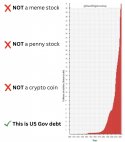You are using an out of date browser. It may not display this or other websites correctly.
You should upgrade or use an alternative browser.
You should upgrade or use an alternative browser.
American Economics Thread
- Thread starter Bernard
- Start date
Retail sales in the US declined 1.1% month-over-month in December 2022, following an upwardly revised 1% drop in November and worse than forecasts of a 0.8% fall. Sales at gasoline stations recorded the biggest decrease (-4.6%), followed by furniture stores (-2.5%), motor vehicle dealers (-1.2%), electronics and appliances stores (-1.1%), miscellaneous (-1.1%) and nonstore retailers (-1.1%). In contrast, sales were up 0.3% in building materials and garden equipment stores (0.3%) and sporting goods, musical instruments and book sellers (0.1%). Sales at food and beverage stores were flat. Retail sales aren’t adjusted for inflation and part of the decrease in December can be explained by a fall in goods prices during the month and a holiday shopping that was pulled forward into October. However, excluding sales at gasoline stations, sales were down 0.8%, in another sign of a weaker-than-expected holiday shopping and a slowdown in consumer spending amid high inflation and interest rates.
source: U.S. Census Bureau
supercat
Colonel
The "business" of the American regime:
Source on annual deficit? This is worse than I thought.The "business" of the American regime:
Unsurprisingly, big tech is carried on the backs of immigrant workers, just like every other US industry that is not management or finance.
Indian nationals make up 27% of tech workers in Silicon Valley.
Indian nationals make up 27% of tech workers in Silicon Valley.
At every tech place I've worked at, once Indians get on the hiring board, the hires thereafter become exclusively Indian. Suddenly we stop hiring other Asians, whites, or anyone other than an Indian even if they have to get a visa for the Indian. I have strong doubts that merit is the primary reason for the Indian share of the tech workforce. Outside of tech, I have heard Hispanics do a similar thing.Unsurprisingly, big tech is carried on the backs of immigrant workers, just like every other US industry that is not management or finance.
Indian nationals make up 27% of tech workers in Silicon Valley.
I've also seen enough of these Indian hires to know the vast majority are not superior to the local stock in terms of software competency. At best they're a wash.
Last edited:
The other way to look at this is that they're actively undermining the competitiveness and performance of those companies. Not a bad thing for their Chinese competitors.At every tech place I've worked at, once Indians get on the hiring board, the hires thereafter become exclusively Indian. Suddenly we stop hiring other Asians, whites, or anyone other than an Indian even if they have to get a visa for the Indian. I have strong doubts that merit is the primary reason for the Indian share of the tech workforce. Outside of tech, I have heard Hispanics do a similar thing.
I've also seen enough of these Indian hires to know the vast majority are not superior to the local stock in terms of software competency. At best they're a wash.

